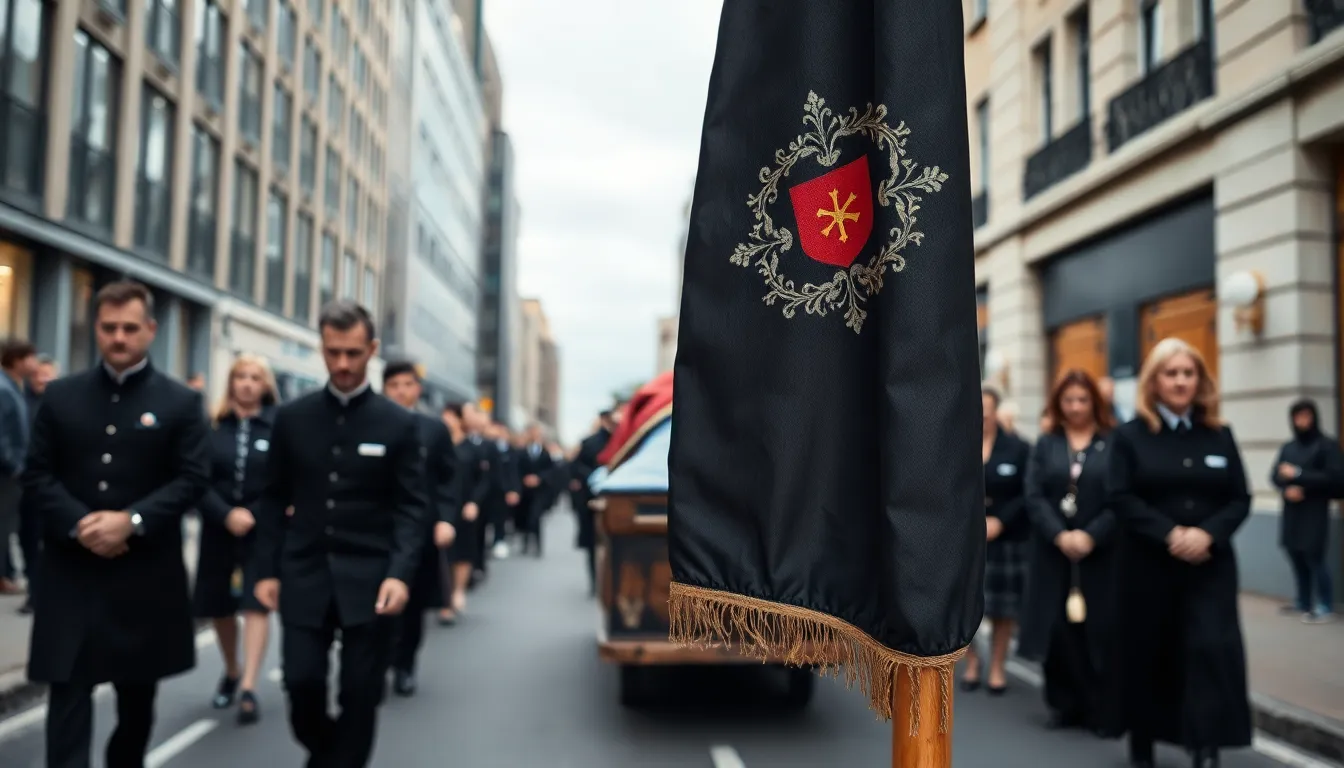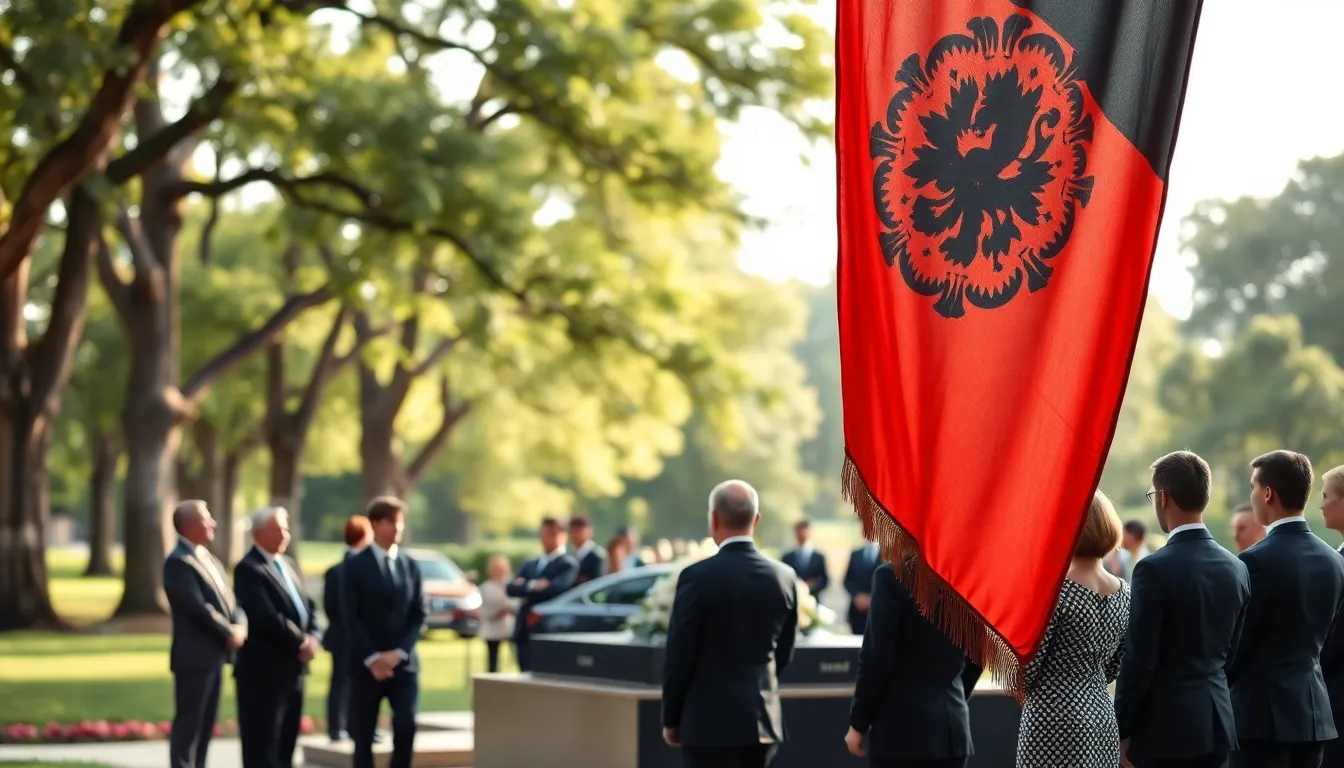Physical Address
304 North Cardinal St.
Dorchester Center, MA 02124

When it comes to funerals, most people think of solemn ceremonies, heartfelt speeches, and, sometimes, that awkward moment when the deceased’s life story takes an unexpected turn. But tucked away in the folds of tradition is an often-overlooked element: the uitvaartstoetvlag. This flag carries a world of meaning, weaving history and cultural significance into the fabric of farewell rituals. So, what’s all this buzzing about, and why should we care? Let’s explore the significance of the uitvaartstoetvlag and how it symbolizes respect and remembrance during life’s final journey.

The uitvaartstoetvlag, or funeral procession flag, carries with it a rich tapestry of history. Its roots can be traced back centuries when flags served not merely a decorative function but were potent symbols during solemn events. Historically, they signified status and communicated the deceased’s standing within the community. In many traditions, the color and design of a flag spoke volumes about the person’s life, reflecting their values, achievements, or even the essence of their family lineage. As a result, the uitvaartstoetvlag is not just a piece of fabric: it’s a storytelling medium, steeped in history and laden with social implications.
As societies evolved, so did the role of flags in funerals, transcending mere adornments to become integral symbols of collective mourning. In the past, nearly every town or city had its unique practices, ensuring that the significance of the uitvaartstoetvlag remained intact, even while adapting style and meaning across generations.
Cultural practices surrounding funerals vary significantly by region, and the use of the uitvaartstoetvlag epitomizes this. In some cultures, it’s a mark of respect for the deceased and is prominently displayed during funeral processions. It serves as a visual reminder of the person’s life, solemnly honored as it moves through streets lined with mourners. The flag can represent the identity of the deceased: in essence, it becomes a reflection of their journey through life.
The design of the uitvaartstoetvlag is often rich and evocative. Various symbols and colors have specific meanings: black may signify mourning, while other colors signify hope or resurrection. The images depicted can vary widely, from religious symbols to personal emblems that tell a unique story about the individual. This interplay of design and meaning elevates the flag’s role from mere ornamentation to an essential aspect of the funeral’s emotional landscape.
At the heart of every funeral is the uitvaartstoetvlag, often leading the procession, a banner of respect that guides the way. It is typically affixed to a hearse or carried by family members, serving as a focal point for mourners. The flag’s visibility reinforces the collective emotion surrounding the event, reminding everyone of the shared experience of loss.
During the actual ceremony, the flag may also be placed at the site of burial or cremation, ensuring its part in the process is both symbolic and literal. This act underlines the connective thread between the deceased and their community, making it a vital part of the ritual, reinforcing the idea that their legacy will be carried forward.
As with many cultural artifacts, variations of the uitvaartstoetvlag exist across regions, each imbued with local customs and traditions. For instance, in some parts of the Netherlands, flags may feature intricate embroidery or specific motifs related to the local culture. Other regions might prioritize simplicity, favoring designs that focus more on color than on emblematic imagery. Each version maintains the core essence of the uitvaartstoetvlag while serving as an outward expression of local identity.
Understanding these differences enriches the appreciation of its significance, highlighting how cultural narratives shape our rites of passage. It shows that the uitvaartstoetvlag isn’t merely a flag: it’s a dynamic emblem that adapts to the nuances of community life.
In contemporary society, the uitvaartstoetvlag continues to evolve. While keeping its traditional bearings, modern interpretations have introduced new materials and designs, often reflecting a wide range of personal expressions. Eco-friendly fabrics are gaining traction, busily making their way into funeral preparations as a nod to sustainability. Similarly, families may choose designs that resonate more closely with the individual’s personality, infusing the proceedings with a personal touch.
This modern twist does not erase the flag’s historical significance: rather, it adds layers, allowing contemporary mourners to express grief in ways that speak to them personally. The uitvaartstoetvlag becomes a blend of tradition and individual tribute, where each funeral becomes a unique reflection of a life lived.